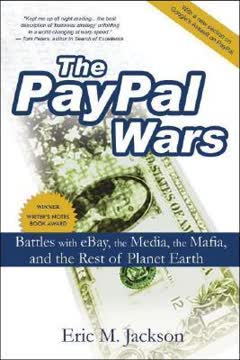Key Takeaways
1. The Audacious Vision: Revolutionizing Global Currency
Eventually PayPal will be able to change this. In the future, when we make our service available outside the US and as internet penetration continues to expand to all economic tiers of people, PayPal will give citizens worldwide more direct control over their currencies than they ever had before.
Bold ambition. When the author joined Confinity (later PayPal) in late 1999, CEO Peter Thiel articulated a vision far grander than just online payments: to empower individuals globally by giving them control over their money, free from corrupt governments and unstable currencies. This "world domination" goal, inspired by events like the Russian and Asian currency crises, aimed to make PayPal the "financial operating system of the world." It was a mission that resonated deeply with the young, libertarian-leaning team.
Beyond convenience. While the initial product, a Palm Pilot-based money transfer service, seemed a novel way to split dinner bills, Thiel saw its potential for radical currency liberation. The idea was that if people could easily convert and store their wealth in stable currencies like USD via PayPal, it would undermine governments that devalued local money through inflation or arbitrary controls. This philosophical underpinning motivated the team more than mere IPO riches.
Inspiring culture. This grand vision fostered a unique, almost utopian culture within the startup. Employees, many of whom were young and idealistic, genuinely believed they were building something world-changing. This shared purpose, combined with an informal, intellectually open environment, allowed the company to attract and retain top talent, even amidst early chaos and uncertainty.
2. The Network Effect: Finding PayPal's Killer App on eBay
For PayPal to grow rapidly and expand all over the internet, the quickest way to do that is to first grow on eBay!
Strategic pivot. Initially, PayPal struggled to find a clear market, but a serendipitous discovery revealed its true potential: eBay. The online auction giant, with millions of users needing a faster way to pay than checks or money orders, became PayPal's unexpected "killer application." This insight led to a rapid, all-in strategic pivot, shifting focus from general person-to-person payments to dominating the eBay marketplace.
Viral growth. PayPal's easy-to-use service, coupled with generous referral bonuses, created a powerful viral loop on eBay. Sellers, eager to get paid faster and earn extra cash, began integrating PayPal logos into their auction listings, effectively marketing the service to millions of buyers. This organic adoption quickly propelled PayPal's "listing share" to over 20% of eBay auctions within months.
Metcalfe's Law in action. Peter Thiel understood that a payment network's value increased exponentially with its users (Metcalfe's Law). By focusing on eBay, PayPal aimed to achieve critical mass before competitors could. This strategy proved crucial, as the growing network effect locked in users and made it increasingly difficult for rivals to gain traction, even with aggressive tactics.
3. The Perilous Merger: Uniting Rivals, Dividing Leadership
We’re merging with X.com. It’s going to be a fifty-fifty merger of the two companies.
Forced alliance. Facing fierce competition from X.com, founded by Elon Musk, PayPal's management made a shocking decision: a 50/50 merger. While it eliminated a major rival and brought in X.com's larger user base and financial products, it came at a cost. PayPal lost its name (temporarily becoming X.com) and its CEO, Peter Thiel, who was replaced by X.com's Bill Harris.
Clash of cultures. The merger brought together two distinct cultures and technologies:
- Confinity (PayPal): Agile, informal, Oracle-based engineering, focused on payments.
- X.com: More corporate, Windows NT-based engineering, aiming for a "financial supermarket."
This clash led to internal paralysis, with engineering teams struggling to integrate and product development stalling.
Leadership vacuum. Bill Harris, the new CEO, struggled to unify the disparate teams and execute a clear strategy. His focus on business development deals, rather than addressing core operational issues like customer service and website stability, exacerbated problems. This drift ultimately led to a boardroom rebellion, with Peter Thiel and other PayPal loyalists orchestrating Harris's ouster, highlighting the deep divisions within the merged entity.
4. The Battle for Survival: Confronting Internal Chaos
For the past couple of months, everyone has talked about doing things, but nothing has actually gotten done.
Operational paralysis. Following the X.com merger, the company descended into chaos. Customer service backlogs soared to over 100,000 emails, the website became unstable, and critical product development stalled. The ambitious "V2" project, intended to migrate PayPal to a new, scalable platform, became a source of internal conflict and delay, consuming valuable engineering resources without delivering results.
Thiel's return. Peter Thiel's return as CEO marked a turning point. He immediately halted the problematic V2 project, reinstated the PayPal brand, and empowered a new "product team" led by David Sacks. This team, composed of young, entrepreneurial individuals, was tasked with rapidly developing features to fix the company's hemorrhaging business model.
Agility restored. The product team, operating with a renewed sense of urgency and decentralized decision-making, quickly launched a flurry of new features:
- Fee-bearing "business accounts" for high-volume sellers.
- "Instant ACH" payments, backed by credit cards, to reduce costly credit card processing fees.
- "Verified" status to build trust and reduce fraud.
This rapid innovation, reminiscent of Confinity's early days, began to stabilize the company's operations and financial outlook.
5. The War on Fraud: Max Levchin's Ingenuity Against Organized Crime
Fraudsters have different patterns than [legitimate customers] do.
Existential threat. As PayPal's user base exploded, it became a prime target for sophisticated fraud rings, including the Russian and Nigerian mafias, who exploited stolen credit cards to siphon millions from the system. Fraud losses soared, threatening the company's very existence and drawing the ire of credit card associations like MasterCard.
Max's genius. CTO Max Levchin, with his quiet intensity, spearheaded the anti-fraud efforts. He developed innovative solutions to combat automated fraud and identify suspicious activity:
- Gausebeck-Levchin test: A "reverse Turing test" (CAPTCHA) on the sign-up page to distinguish humans from automated bots, making it harder for criminals to create fake accounts.
- "Igor" system: A program named after a taunting fraudster, designed to scan transaction patterns for anomalies indicative of money laundering.
These tools significantly reduced fraud losses, earning Max recognition as "Innovator of the Year."
Calculated risk. PayPal's approach to fraud was not to eliminate it entirely, but to contain it without stifling growth. Max understood that overly intrusive security measures could deter legitimate users. While some "false positives" inconvenienced honest customers, the overall strategy was crucial for the company's survival and for protecting its growing network from being bled dry by criminals.
6. The Path to Profitability: Redefining the Business Model
We needed to find a way to get revenue from our reluctant sellers without driving them to Billpoint; it meant we’d have to transform PayPal from a free internet service into a successful fee-based one, something that few dotcoms had accomplished.
Burning cash. Despite rapid user growth, PayPal was losing millions monthly due to free services, referral bonuses, and high credit card processing fees. The initial "financial supermarket" vision was too distant, forcing a pivot to monetize the core payments service. This meant introducing fees without alienating the user base.
Strategic fee implementation. The company carefully rolled out fee-bearing "business accounts" for high-volume sellers, initially optional, then enforced with a $500 credit card receiving limit. This was a delicate balance, as users had been promised an "Always Free" service. The strategy worked, with 95% of targeted sellers upgrading, proving customers would pay for value.
Cost control. Beyond fees, PayPal aggressively reduced costs:
- Lowering referral bonuses.
- Encouraging bank account (ACH) funding over costly credit cards.
- Overhauling buyer protection policies to reduce fraud liability.
These measures, combined with Max's anti-fraud systems, dramatically improved transaction margins, turning PayPal from a cash-burning machine into a profitable enterprise by late 2001.
7. The Monopolist Strikes: eBay's Relentless Assault on PayPal
EBay had changed the SYI set-up for sellers with Billpoint accounts without announcing it.
Home-court advantage. eBay, recognizing PayPal's growing dominance on its platform, launched a series of aggressive tactics to promote its own payment service, Billpoint. These moves, often implemented without warning, aimed to leverage eBay's marketplace monopoly to disadvantage PayPal.
Tactics included:
- Free listing days: Offering free auction listings to sellers who accepted Billpoint.
- Logo policy: Restricting PayPal's logo size while giving Billpoint prominent placement.
- "Buy It Now" integration: Steering buyers directly to Billpoint payment forms after fixed-price purchases.
- Default preferences: Secretly changing sellers' account settings to automatically accept Billpoint.
- eBay Stores mandate: Requiring Billpoint or a merchant account for participation in its new fixed-price storefronts.
User rebellion. Despite eBay's power, its heavy-handed tactics often backfired. Users, feeling their control over their businesses threatened, frequently sided with PayPal. The "Checkout" debacle, where eBay forced a mandatory payment flow, sparked a massive user revolt that forced eBay to backtrack, demonstrating the strength of PayPal's bond with its customers.
8. The IPO Against All Odds: Navigating Legal and Market Turmoil
The IPO process takes a considerable amount of time, generally a minimum of three to four months, long enough for a company’s bankers, lawyers, and accountants to learn enough about its business so they can describe it to other bankers, lawyers, and accountants.
Defying the market. In September 2001, just after the 9/11 attacks and amidst a crashing NASDAQ, PayPal filed for an IPO. This audacious move, while met with skepticism by a media eager to declare all dot-coms "dot-bombs," was a calculated risk by Peter Thiel, who believed the market would stabilize during the lengthy IPO process.
Legal onslaught. The IPO process triggered a barrage of unexpected legal and regulatory challenges:
- CertCo lawsuit: A patent infringement suit filed days before the IPO, forcing a delay.
- State regulators: Louisiana, New York, and others demanded money transmitter licenses, threatening to ban PayPal's service.
- SEC scrutiny: Accusations of violating quiet period rules through a Gartner survey.
These "Earth vs. Palo Alto" battles threatened to derail the offering, highlighting the unique non-market risks faced by innovative startups.
Strategic sacrifice. To ensure the IPO's success, Peter Thiel prioritized speed over maximizing valuation. He pushed bankers to price the shares quickly, even if it meant a lower initial price. This decision, coupled with a unique program to allow loyal customers to purchase pre-IPO shares, ultimately led to a successful public debut on Valentine's Day 2002, with shares soaring 55% on the first day.
9. The Strategic Surrender: Selling Out to Secure the Future
We’ve agreed to sell to eBay.
The inevitable. Six days after PayPal's IPO, eBay acquired Wells Fargo's stake in Billpoint, signaling renewed aggression. This, combined with ongoing regulatory threats (like Eliot Spitzer's subpoena regarding online gaming), convinced Peter Thiel that PayPal's long-term independence was unsustainable. Despite a prior rejection, eBay's offer to acquire PayPal for $1.5 billion, shutting down Billpoint and integrating PayPal as its official payment service, became the most logical path forward.
Ending the war. The acquisition ended the two-year "corporate war" with eBay, removing the existential risk of being shut out of its primary market. It also offered a shield against the growing legal and regulatory challenges, leveraging eBay's established lobbying power and brand recognition. For employees, it promised stability and a lucrative stock option acceleration.
Loss of vision. While financially beneficial, the sale meant sacrificing PayPal's original, audacious vision of global currency liberation. eBay's focus was on its own marketplace, not on reinventing the world's financial systems. The acquisition also raised concerns about cultural integration, with eBay's more bureaucratic, meeting-heavy culture clashing with PayPal's entrepreneurial agility.
10. The PayPal Mafia: A Legacy of Entrepreneurial Talent
The collective exploits of PayPal’s alumni prove that the team we had at PayPal was once-in-a-generation special.
Talent incubator. Despite the cultural clashes and loss of independence, PayPal's early team proved to be an extraordinary incubator of talent. Following the eBay acquisition, a mass exodus of key executives and employees, including Peter Thiel, Max Levchin, David Sacks, and Reid Hoffman, left to pursue new ventures.
Reshaping Silicon Valley. These "PayPal Mafia" alumni went on to found or play pivotal roles in some of the most influential companies of the 21st century, fundamentally reshaping technology and society:
- Facebook: Peter Thiel (first VC investor, board member)
- SpaceX & Tesla: Elon Musk (founder, CEO)
- LinkedIn: Reid Hoffman (cofounder)
- YouTube: Chad Hurley, Steve Chen, Jawed Karim (cofounders)
- Yelp: Jeremy Stoppelman, Russel Simmons (founders)
- Affirm: Max Levchin (founder)
- Palantir: Peter Thiel, Joe Lonsdale, Nathan Gettings (cofounders)
Beyond startups. The impact extended beyond tech startups to venture capital (Founders Fund, Craft Ventures) and even public service (Ken Howery as US Ambassador to Sweden, Vince Sollitto as press secretary for Governor Schwarzenegger). This unparalleled track record cemented PayPal's legacy as a unique breeding ground for entrepreneurial genius.
11. Entrepreneurship's Unseen Adversaries: Lessons from the Trenches
Many institutions in modern America combine to make growing a successful entrepreneurial venture even more difficult than it needs to be.
Beyond competition. The PayPal story reveals that market competition is just one of many formidable challenges entrepreneurs face. The company battled a "rogues' gallery" of non-competitive threats that often proved more dangerous than rivals:
- Capricious regulators: State agencies and federal bodies (FDIC, SEC) often interpreted vague laws to impose fines or restrictions, sometimes seemingly for self-promotion.
- Opportunistic lawsuits: Patent trolls and class-action lawyers targeted PayPal's success with costly litigation.
- Unstable capital markets: Federal Reserve policies contributed to boom-bust cycles, making financing unpredictable.
- Ineffective law enforcement: Companies often had to develop their own sophisticated defenses against organized online crime.
Destroying "creative destruction." The author argues that this combination of external pressures risks stifling "creative destruction"—the process by which new innovations disrupt existing economic orders. If entrepreneurs must constantly fight against an obtuse regulatory system, a litigious legal environment, and unstable markets, even the brightest minds may be overwhelmed.
Empowering talent. Despite these systemic challenges, PayPal's success offers a crucial lesson: the power of hiring exceptional people and empowering them. By fostering a culture of intellectual openness, rapid execution, and shared purpose, Peter Thiel and Max Levchin built a team that could navigate immense internal and external pressures, ultimately creating a multi-billion dollar company that transformed online payments.
Last updated:
Review Summary
The PayPal Wars receives mostly positive reviews, praised for its insider perspective on PayPal's early days and struggles. Readers appreciate the detailed accounts of the company's growth, competition with eBay, and internal challenges. The book offers insights into Silicon Valley startup culture and the personalities involved, including Peter Thiel and Elon Musk. Some critics find the writing repetitive or biased, but overall, it's considered a valuable read for those interested in tech history and entrepreneurship.
Similar Books
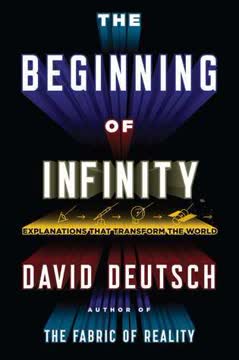
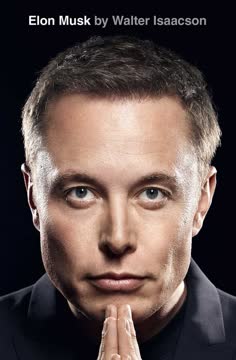
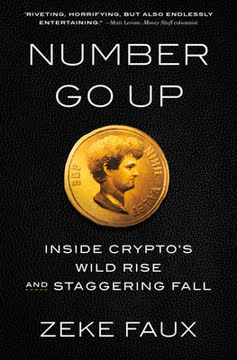

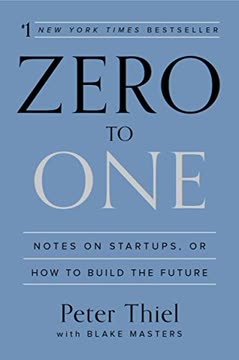
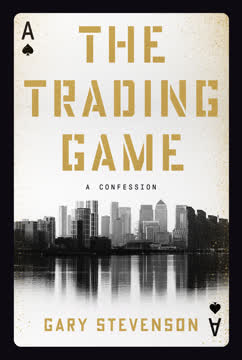


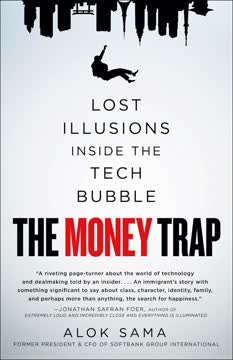

Download PDF
Download EPUB
.epub digital book format is ideal for reading ebooks on phones, tablets, and e-readers.
